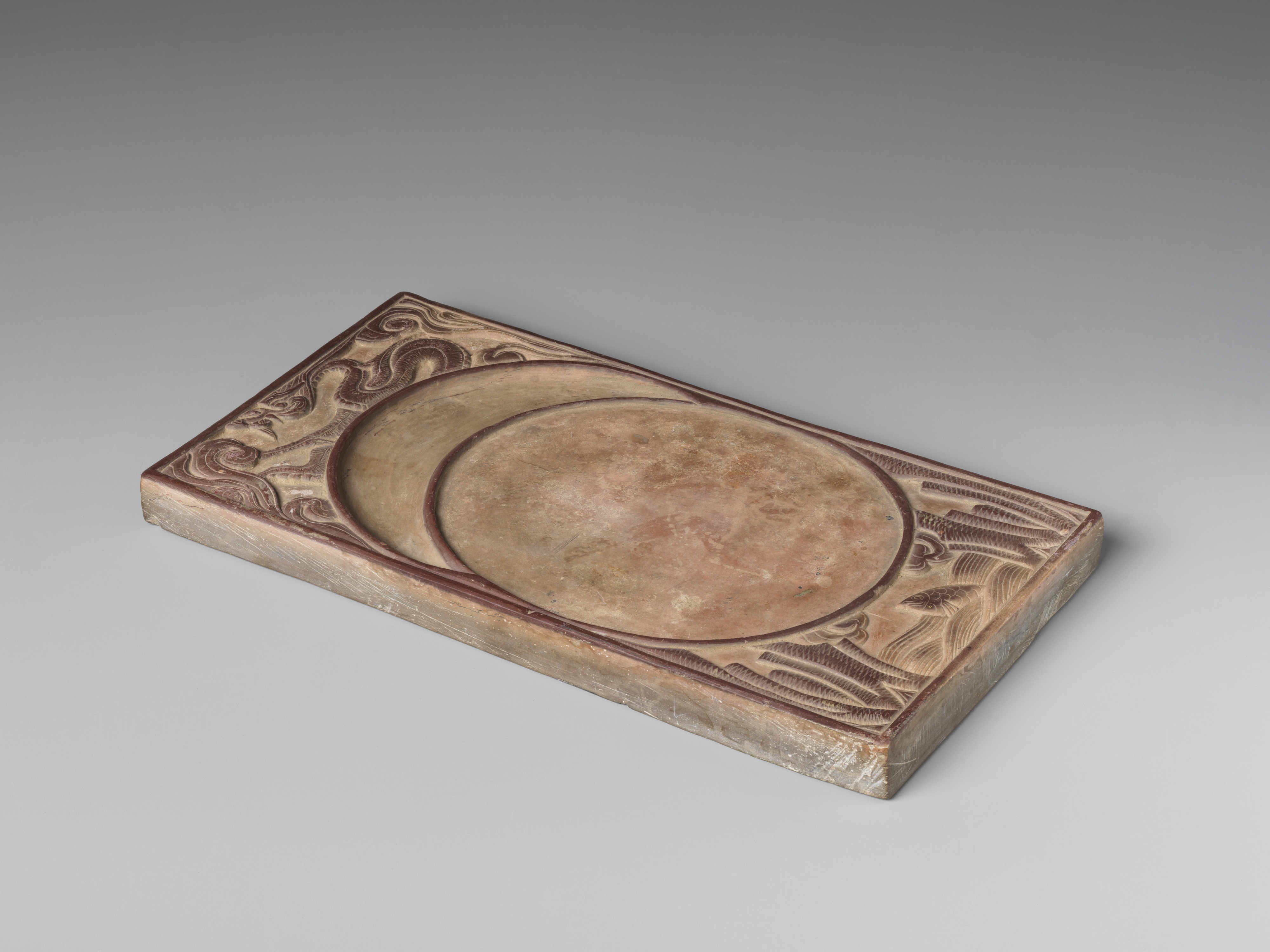Inkstone with dragon and carp
Not on view
This unusual inkstone is carved from a type of stoneware known as chengni, or “filtered clay.” Made from very fine silted clay that has undergone a labor-intensive process of filtering, kneading, molding, firing, and carving, chengni inkstones became popular during the Song dynasty (960–1279). The vigorous carving style of this piece, however, dates it to the fourteenth century. The inkstone’s decoration invokes the myth that a carp, should it succeed in swimming upstream through the Dragon Gate of the Yellow River, will become a dragon. A metaphor for success on the civil service exam, here, the gulf between carp and dragon is defined by the inkstone and inkwell—whose diligent use might well decide the difference between failure and success.
Due to rights restrictions, this image cannot be enlarged, viewed at full screen, or downloaded.
This artwork is meant to be viewed from right to left. Scroll left to view more.



